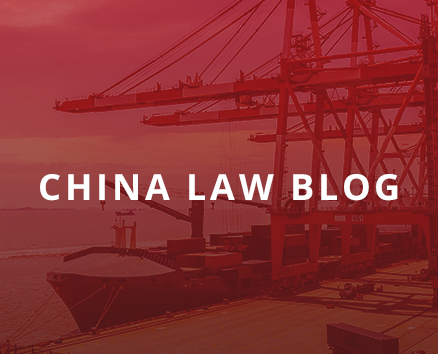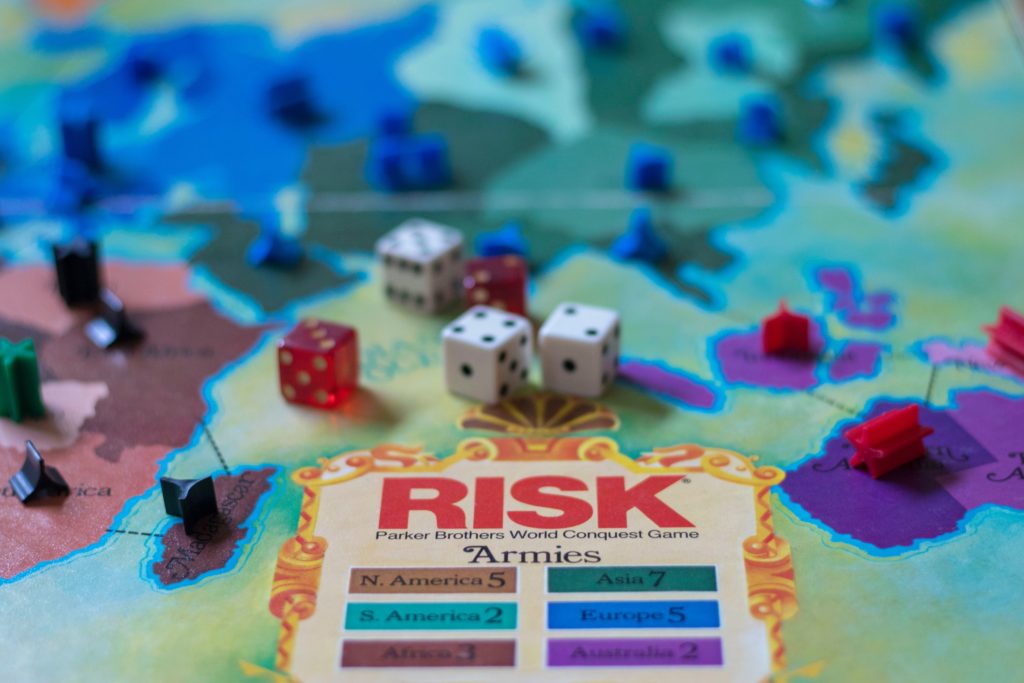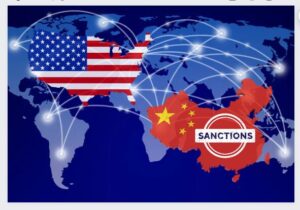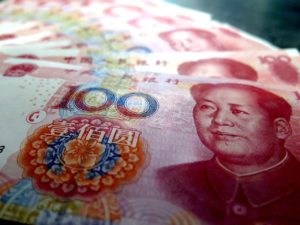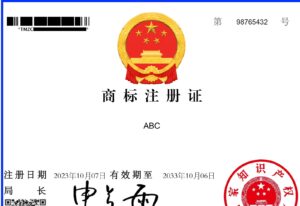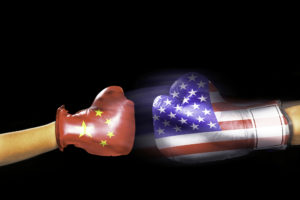China Manufacturing Risks Are at Level 11
Making products in China is much more complex than it was five years ago, due to these factors:
1. The U.S. tariffs have profoundly impacted companies that ship products from China to the United States or make products in China. Many of my law firm’s clients will not place an order without first consulting with one of our international customs lawyers.
2. Chinese manufacturers fear losing their foreign buyers to other countries that can avoid the tariffs. This has led them to steal the IP of their current or potential product buyers more often, and then compete with them directly.
3. China’s economy is doing poorly, and countless Chinese manufacturers have shut down in the last few months and many more are teetering on the verge of insolvency. My firm’s international lawyers have been seeing a massive increase in Chinese manufacturers taking money from foreign companies and then vanishing without ever making a single widget. I personally have heard from around a half dozen US and EU companies in just the last year that have gone out of business after losing huge money to a Chinese factory that took their money and then disappeared.
4. In Fighting Back Against Fake (and Real) Sinosure Claims: A Primer, I wrote about how desperate Chinese factories are calling in Sinosure in an effort to avoid having to shut down, and how Sinosure is wreaking havoc with US and EU product buyers.
Big Company and Small Company China Manufacturing Risks
Changes in outsourced manufacturing are not hitting our clients equally. Our biggest clients have been relatively unaffected, whereas far too many of our small company clients have gone under, or at least left China entirely.
Before doing anything with anyone in China, the typical big company secures its China trademarks for its company name, its brand name, and its logos — at least whatever names and logos it will be putting on the products and packaging it will be having made in China. For why this is smart, check out China Trademarks: Register Yours BEFORE You Do ANYTHING Else. This big company also likely requires each of its potential Chinese suppliers sign a China NNN Agreement before it revealed any trade secrets.
Then once the big company chooses the Chinese factory (or factories) it will use to make its products, it makes that factory sign a comprehensive manufacturing agreement that contains well-thought out contract damages/liquidated damages provisions and IP protections. In other words, the typical big company protects its IP against China, analyzes its China risks, and drafts its contracts for China to reduce those risks.
Small companies often do not act similarly, even though their risks are now sky-high because so many Chinese companies are at great risk of going under and this is causing them to do things they were less likely to do when times were good.
China’s New and Increased Manufacturing Risks
In China Trademark Theft. It’s Baaaaaack in a Big Way, we discussed the massive increase our China lawyers are seeing in quick-fire trademark thefts:
Starting a year or so ago, our China trademark lawyers started getting a ton of China trademark theft calls and the number of those calls has been accelerating ever since. Why has the tide on trademark “theft” come in again? Two reasons. One, there is hardly a sole in China who does not know how to get around the prohibition on an agent registering the trademark that rightfully should go to the foreign company for whom it is acting as an agent. If your manufacturer in Shenzhen wants to secure “your” trademark in China it will not register it under its own name as it knows that cannot work. So instead of registering the trademark under its own Shenzhen company name, it will ask a cousin or a nephew in Xi’an to register it under its company name, making it nearly impossible for you to invalidate the trademark. Two, many Chinese factories are hurting right now, and they desperately want to improve their profit margins. What better way to do so than to sell a product under a prestigious or well-known American or European brand name — or even just any brand name? See Your China Factory as Your Toughest Competitor.
We are also seeing a big increase in situations where a foreign company has paid its Chinese factory for its products, yet never received anything, or received product of such bad quality as to indicate the Chinese factory did not even try. We are also seeing an increase in small companies getting victimized by the China bank switch scam. See China’s Most Common Scams. But with this new twist: we believe Chinese factories are more often participating in this scam because they think they will soon be out of business and so they are grabbing money however they can. Then there is the whole Sinosure thing, which — if not handled correctly, can easily destroy your business. See Fighting Back Against Fake (and Real) Sinosure Claims: A Primer.
Why do all of these terrible things happen to small businesses that want nothing more than to have good product made in China? To at least some extent it is because they have let their guard down at the absolute worst time. Far too many are either unaware of how bad and how risky dealing with Chinese factories has become, or they are simply (and mistakenly) choosing to ignore this.
How to Reduce Your China Manufacturing Risks
What should small companies be doing that they can actually afford to do? What is the baseline of what SMEs should be doing to protect themselves from China? At minimum, SMEs should be doing the following:
1. Check out their existing and potential China factories. See On the IMMEDIATE Importance of China Manufacturer Due Diligence.
2. Register their company name and brand name as China trademarks before revealing either to anyone in China. See China Trademarks: Register Yours BEFORE You Do ANYTHING Else.
3. Make their potential China factories sign a well-crafted China-centric NNN Agreement before revealing ANY secret.
4. If it makes economic sense to do so, have a well-crafted China-centric agreement that protects important molds and tooling and that specifies exactly what your Chinese factory will be making and exactly when it must deliver that.
5. Check in from time to time with their China factory, if only just by phone. Talk with the factory owner. Ask “how things are going.” Oftentimes they reveal their fears, and this can help you figure out what to do going forward.
6. Read China’s Economic Slowdown and YOUR Business: The Times they are a Changin’.
7. Do not go to China without first discussing your risks of doing so with someone truly familiar with those risks. I have been doing a ton of China travel risk assessments lately and around ten percent of the time my advice is that the client does not go to China under any circumstances. Note that the US State Department raised the risk level on going to China, with the following explanation:
Exercise increased caution in China due to arbitrary enforcement of local laws as well as special restrictions on dual U.S.-Chinese nationals.
Chinese authorities have asserted broad authority to prohibit U.S. citizens from leaving China by using ‘exit bans,’ sometimes keeping U.S. citizens in China for years. China uses exit bans coercively:
-
-
- to compel U.S. citizens to participate in Chinese government investigations,
- to lure individuals back to China from abroad, and
- to aid Chinese authorities in resolving civil disputes in favor of Chinese parties.
-
In most cases, U.S. citizens only become aware of the exit ban when they attempt to depart China, and there is no method to find out how long the ban may continue. U.S. citizens under exit bans have been harassed and threatened.
U.S. citizens may be detained without access to U.S. consular services or information about their alleged crime. U.S. citizens may be subjected to prolonged interrogations and extended detention for reasons related to “state security.” Security personnel may detain and/or deport U.S. citizens for sending private electronic messages critical of the Chinese government.
Get Specific Regarding Product Quality
Our China manufacturing lawyers have also been seeing a big increase in Chinese manufacturers providing poor quality product, usually in an effort to reduce costs. We are always emphasizing to our clients the need to be specific with their product requirements when buying product from Chinese manufacturers, as this is the best way to ensure good quality products.
If you want good quality products — as defined by you — you must be clear about exactly what you want. If your product and all of your competitor’s products are always made with 10% copper and everyone knows this, you still need to make clear in your spec sheet that you want your product to be made with 10% copper and then in the contract itself you need to make clear (and in Chinese) the liquidated damages to which you will be entitled if the product you receive has anything less than 10% copper in it.
Words like “blue” or “good quality” or “typical in the industry” are meaningless when it comes to Chinese courts. There is a wide range of blues and unless you specify the exact blue you want, the odds you will get the one you want or even the one in the sample you received are slim. And what does “good quality” mean in a country where you can buy t-shirts for 45 cents that fall apart after one wash? Typical in the industry? What industry? Typical in China where they are made or typical for Saks Fifth Avenue?
A Real-World Example: Manufacturing Contract Specificity and the Office Chair
When I give speeches about what should go into Chinese contracts, I usually riff on something like the following:
Many years ago, I heard a story of an American who was renting an apartment in Shanghai. Now I am not even sure if this story is true or apocryphal, but it is such a good story to illustrate how Chinese judges and arbitrators view contracts it really doesn’t matter whether it happened or not.
It was a nice apartment this American was renting, and it had a really nice expensive office chair — high end apartments in China are usually fully furnished. One day, the really nice office chair broke and became unusable, and the American tenant kept asking his Chinese landlord to replace it. But that wasn’t happening.
The lease on the apartment eventually came up for renewal and the American refused to renew unless the landlord put in writing that it would replace the really nice office chair. The landlord agreed and after the new lease was signed, the landlord sent someone to the American’s apartment to put in a $2 metal folding chair.
What would happen in the United States if this tenant were to sue the landlord over the landlord’s failure to replace the office chair with something pretty comparable? Anyone know?
The tenant would win because the court would essentially write into the lease contract the provision that the replacement chair had to be a good office chair like the one it was replacing. What would happen if the tenant sued the landlord in a Chinese court?
The Landlord would win because if you want something in your contract in China, you need to put it in there with specificity.
Why is this chair story even relevant? It’s relevant because American companies time and again fail to put enough into their contracts with Chinese companies. Instead, they just assume the courts or arbitrators will know what the parties intended and rewrite their contracts accordingly. But it does not work that way in China.
More Real-World Examples on the Need for Manufacturing Contract Specificity
We had a company come to us after having received a large shipment of laptop bags that weren’t strong enough to hold a laptop. We called the Chinese company to ask about getting a refund and they told us that if our client had wanted a bag strong enough to hold a laptop, it should have paid 50 cents more per bag for one that could actually do that. This company should have specified in its contract that it wanted a bag that could hold x number of kilograms.
Many years ago, the Wall Street Journal did an article, Fifty Shades of Blue: Tar Heels Seek the Truest Hue, on how important “North Carolina blue” is for North Carolina fans. Don’t I know it. I know it because I talk about it in just about every talk I give on China manufacturing contracts and I thought about that just this morning after getting off the phone with a potential client who has what I call the “North Carolina blue problem.”
This company was calling because it had spent A LOT of money buying what it thought would be a 6 inch product, but upon delivery is a 6.25 inch product. A quarter of an inch you say? Well this quarter of an inch just reduced the value of this product (it’s actually more a component than a product) from about a million dollars to scrap value of at most $25,000. NOTE that I greatly modified all of this information from this new caller so as not to reveal anything about it.
First though, I cannot resist telling (retelling actually) my North Carolina blue story. That matter involved a North Carolina (NC) company that called us wanting our international litigators to sue a Chinese company that had provided the NC company with “bad” shirts. The NC company had sent a sample shirt to a Chinese manufacturer for color matching and the Chinese manufacturer in turn sent the NC company a sample shirt back to the NC company. Based on the high quality color matching of the Chinese manufacturer’s sample, the NC company ordered nearly a million dollars worth of North Carolina blue shirts.
One problem. The shirts that arrived, though blue, were not North Carolina blue. And as every reader of the above Wall Street Journal now knows and as every college basketball fan already knew, the University of North Carolina has its own specific shade of blue. And for reasons normal human beings cannot fathom, there are a horde of people who want only that North Carolina blue color in their jerseys and there is no way those people are going to buy an ordinary blue jersey. All of this meant that instead of this NC company being able to sell its jerseys for maybe $30, it would maybe be able to get $3 a shirt. The NC company had obviously suffered major damages.
We turned down the North Carolina case because we did not want it on a contingency fee basis, nor did we want to charge our hourly rates on a case we did not think could be won. We did not like this case because generally if you are in front of a Chinese court and something is not specifically in your Manufacturing Agreement, in Chinese, and sealed/chopped you are going to have problems. This NC company had only some English-language emails saying it wanted the shirts to be like “the sample.” What sample?
Yes, this North Carolina company could have sued its Chinese manufacturer in a U.S. court and won. However, because China rarely enforces U.S. judgments, and because the Chinese manufacturer did not have any U.S. assets, the U.S. judgment probably would have been worth less than one of the wrong color shirts the NC company received. Yes, the NC company was stuck, out nearly a million dollars over a few shades of blue.
This new phone caller is better positioned to pursue its Chinese manufacturer based on its emails, and yet it would be way better positioned if it had a manufacturing contract in Chinese, and not just a bunch of English language emails and a purchase order.
What is the moral of the above stories?
One, be super clear about what you are ordering from your Chinese manufacturers. Two, use an effective and China appropriate manufacturing agreement that either sets out with massive specificity exactly what you will be ordering. Three, get that China manufacturing agreement signed and sealed/chopped by your Chinese manufacture. These three things do not guarantee you will have recourse against your Chinese manufacturer, but they greatly increase your odds.
Your contracts with your Chinese manufacturers should be ultra-specific about everything, and especially about the product specifications. This is a key to getting good products from China and it is also one of the keys to doing business in China or with China.
For more on what should go into your China OEM Agreement and how to succeed in outsourcing product from China, check out Manufacturing in China: Minimizing Your Risks by Doing Things Right.
China Manufacturing Contract Protection that Works
Last week I sent an email to a U.S. company explaining why the international dispute resolution lawyers at my law firm do not think it makes sense for them to pursue bad product claims against their Chinese manufacturer. This email essentially recited all the things the recipient did to ensure the product it would get from its manufacturer would be substandard and why once it got that product, there was little or nothing our dispute resolution lawyers could do to secure compensation for the quality problems.
I ran your case by our international dispute resolution lawyers, and they are not interested in taking it on a contingency fee basis and they also say they cannot in good conscience ask you to pay us to pursue it. Our lack of interest in your case stems from the following:
1. Your contract (even assuming this qualifies as a contract under Chinese law) is in English. Many courts in China will not hear a case with an English language contract. This is even more likely to be the case in a place like Hubei Province.
2. It looks like you did not pay the Chinese company with whom you have the contract. You instead paid some other company based in Hong Kong. This is a classic China ploy. If you sue the company with whom you have the contract, it will say you never paid them because you didn’t. Not sure who would win on this, but it is another expensive hoop you will have to jump through.
3. The “contract” says you will inspect the product before it ships. The manufacturer will contend you either did inspect the product and were fine with it or you chose not to inspect. Either way, it should make for a pretty good defense because you allowed the product to be shipped without voicing any complaint. If you are not going to inspect product before it gets sent to, you should not have this sort of provision in your contract.
4. China does not generally recognize samples as the standard that must be met. If you want your product to be of a particular quality, you need to lay out every specification that will get it to that quality and that must be made a part of your contract. Putting in a term like “good quality” in a contract with a China manufacturer is a waste of time because China has incredibly low-quality levels that are just fine for Chinese commerce and for Chinese courts. It is not at all clear to me that your manufacturer failed to give you exactly what you ordered. You say that it is of “bad quality” but that is under Canadian standards, not under any standards that I see in your contract and that is what is going to matter to a Chinese court.
You might want to try to interest a Chinese lawyer in taking this case, but even that might not be worth your time and money as you will almost certainly have to pay a fair amount of money just on the out-of-pocket costs for pursuing this litigation. Suing in the United States would almost certainly be a waste of time and money unless this Chinese manufacturer has assets in the United States, and very few do. China courts do not enforce U.S. judgments so even if you win over here, it will be of little to no value in collecting money from your Chinese manufacturer in China. For more on this, check out Enforcing US Judgments in China: Not Yet.
If you are going to continue buying product from China, you should start using a manufacturing contract that works for China. You need a contract that convinces your manufacturer that you can win in a Chinese Court. With that sort of contract, your chances of getting bad product go way down, and should you get bad product, your chances of winning at trial and getting your money go way up.
Leaving China, IF Possible
Just the other day (like so many days before that), I got an email from someone asking what they can do to determine whether they are under an exit ban? My response was that I know of no way to determine this, short of finding out whether you were or were not under a China exit ban when you try to leave China. The one best thing to reduce your risk of an exist ban is to have someone who knows China assess your risks before you go to China. See How to Assess Your Personal China Risks. See also China Exit Bans: You Can Check Out Any Time You Want, But You Can’t Ever Leave. Most importantly, if you have any doubts about how safe it will be for you to go to China, feel free to reach out to my law firm for a personal China risk assessment. We virtually always do these on a flat fee basis.
And if you’ve had enough of China and want out, please know there can be massive risks in leaving China as well. See How to Close Your China Business The Airbnb (Right) Way and How Companies Seeking to Leave China for Mexico Can Mitigate Their Legal Risks and Protect Against New Ones.
What are you seeing out there? How do you protect your company and yourself from China?





